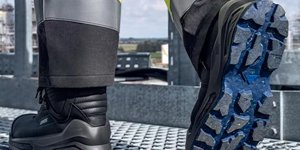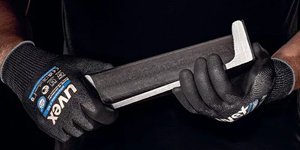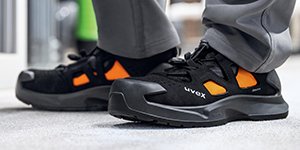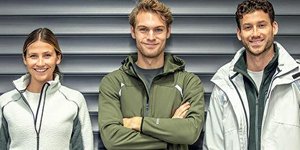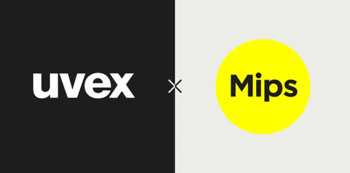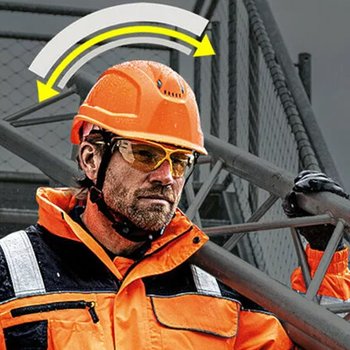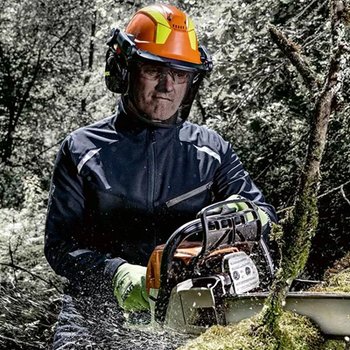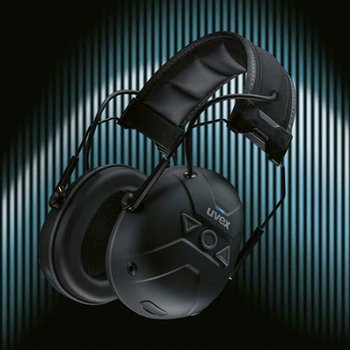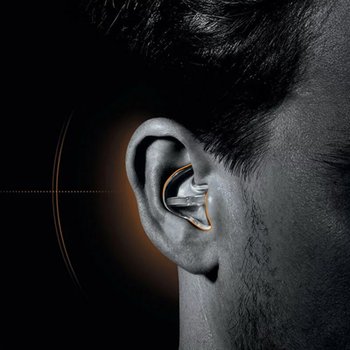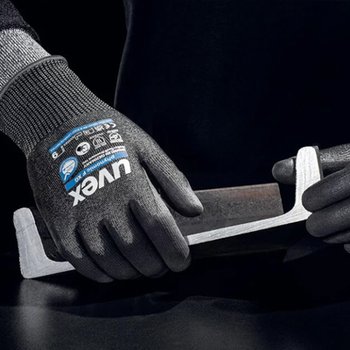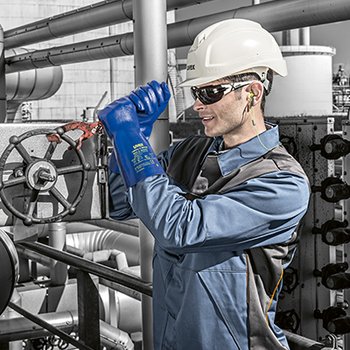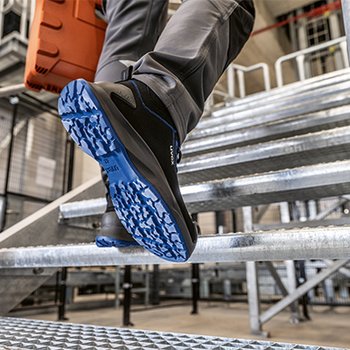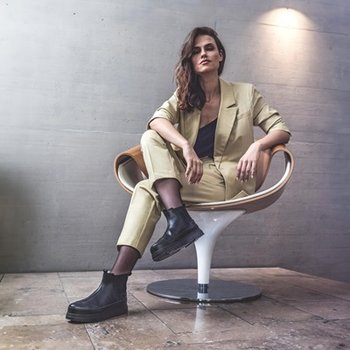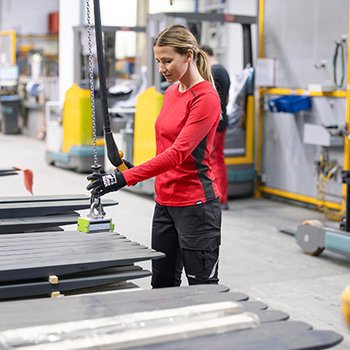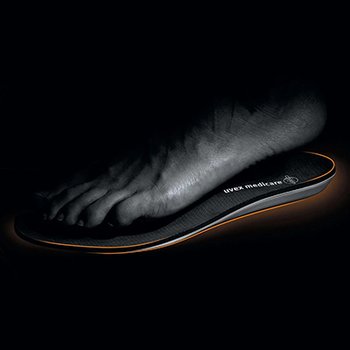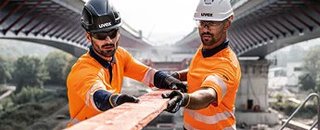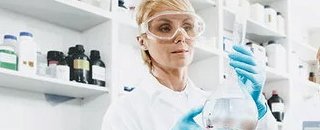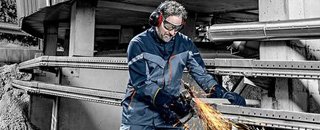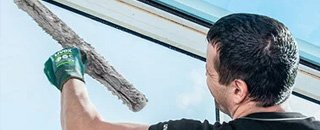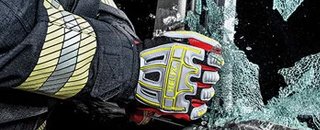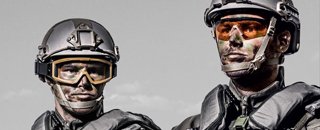The most in-demand uvex products since the start of the pandemic
In line with our motto of #protectingpeopletogether, uvex has ramped up production. In response to the pandemic, the Robert Koch Institute published its recommended actions for protection against SARS-CoV-2 pathogens. Based on these recommendations, we developed a range of products specifically designed for use during the coronavirus pandemic and increased production of existing products from our portfolio:
uvex spectacles with mouth and nose mask (MNM)
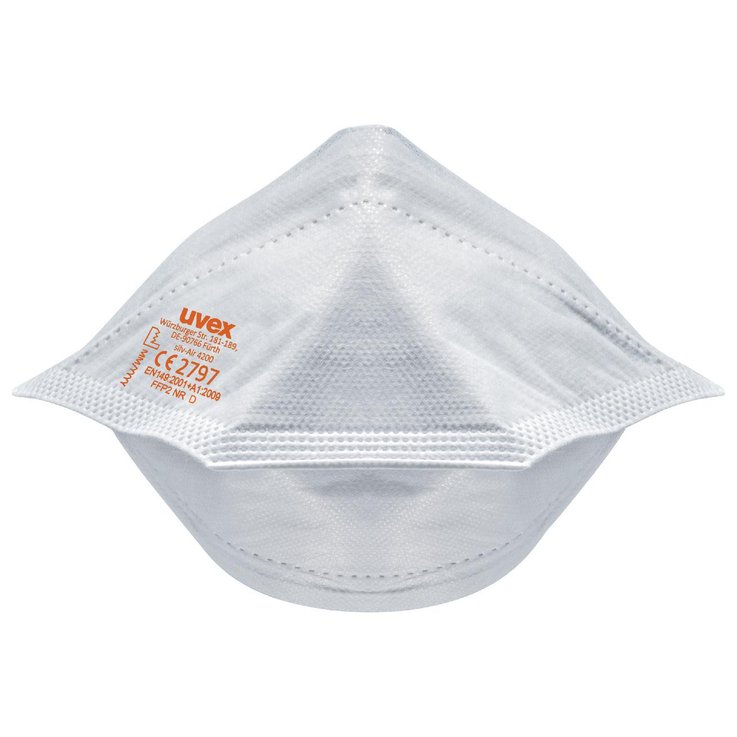
uvex respirators
Since the start of the COVID-19 pandemic, there have been challenges in meeting demand for respirators. In spite of the fact that manufacturers have ramped up production, there has been a shortage of respirators around the world. Given the seriousness of the situation at the start of the pandemic, uvex set aside buffer stock of respirators for medical personnel to protect these front-line employees. uvex called on its internal testing laboratory to verify and guarantee the quality of its range of respirators. We are continually working to improve delivery availability and to increase production capacity. To secure the future supply of these essential products, uvex is entering into long-term delivery contracts with its partners, as well as generally expanding its capacity. Currently, none of the respirators produced by uvex are dispatched to warehouses; every single product is delivered directly to end users, who can put them into service where they are needed most. We are happy that we are able to play an important role in combating the pandemic by helping to keep people safe all around the world.
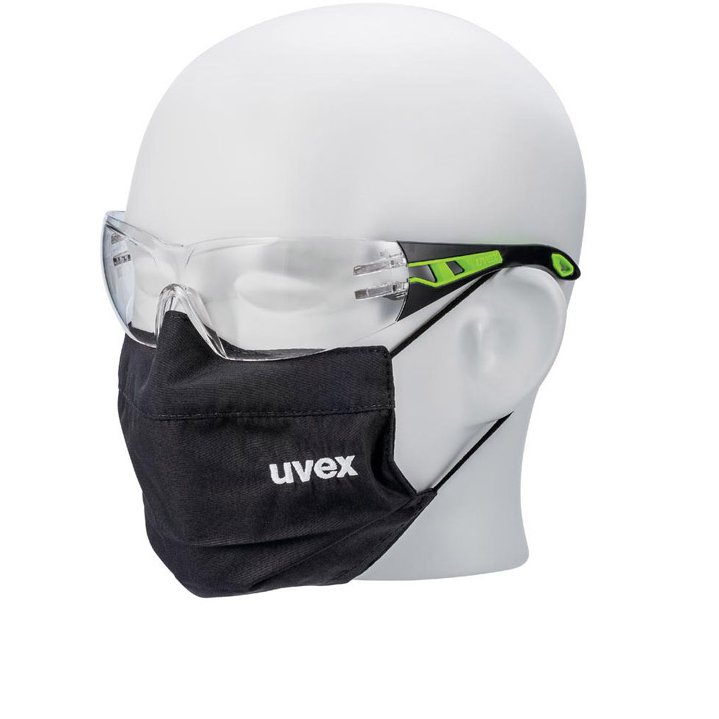
Spectacles with mouth and nose mask (MNM)
As hygiene protocols were implemented across industry, we also saw increased demand from our industrial customers. We saw a significant upturn in general demand for safety spectacles, particularly in the medical and public sectors, across the world. To minimise SARS-CoV-2 virus infections in industry, uvex designed a pandemic protection set based on uvex pheos spectacles and a mouth and nose mask developed in-house at uvex. The double-stitched mouth and nose mask can also be used as a bag for the safety spectacles, enabling you to conveniently transport both items together.
uvex goggles
Goggles with a frame in category 3 (liquids: droplets and spray) or higher are generally recommended as the most effective way to prevent the SARS-CoV-2 virus from entering the body through the eyes. This recommendation fuelled increased demand for category 3 uvex goggles. To provide even greater protection, goggles with a frame in category 4 (dust particles > 5 microns) and/or 5 (gas, vapours, mist, smoke and dust particles < 5 microns) are recommended. Employers are responsible for providing the appropriate PPE.
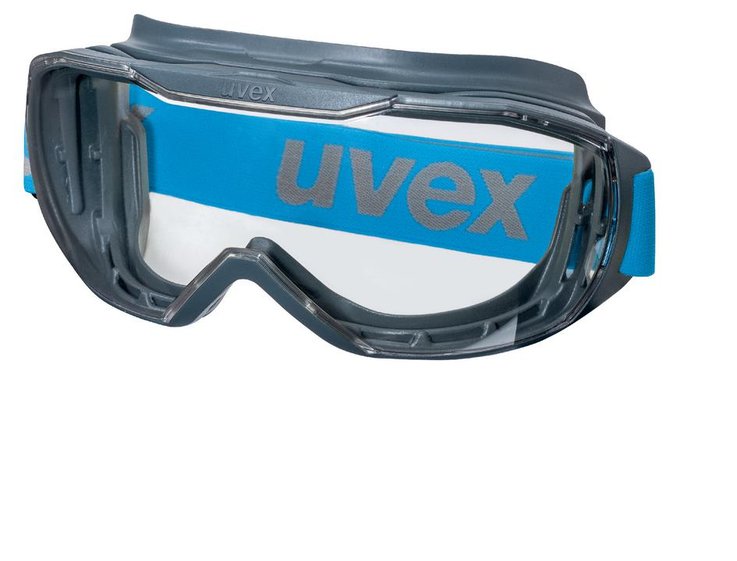
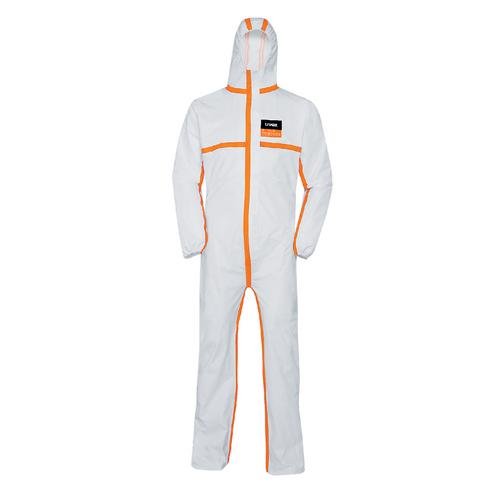
uvex overalls
Employees in the medical and pharmaceutical sectors require full body protection. This is of enormous importance to doctors, medical personnel and pharmacists. Many uvex disposable overalls satisfy the requirements of the DIN EN 14126 standard for clothing designed to protect against infectious diseases. These overalls have been tested for resistance to media that contain micro-organisms, such as fluids, aerosols or solid dust particles. They have not been tested for protection against specific viruses or bacteria. Overalls with taped seams provide a higher level of protection as the micro-organisms are small enough to penetrate through the tiny needle holes along the seam.
uvex hygiene gloves
Safety gloves made in Germany meets Swiss technology: our innovative uvex phynomic silv-air and uvex phynomic silv-air grip safety gloves minimise the risk of contact infection from objects within five minutes. The revolutionary textile technology HEIQ VIROBLOCK by CHT inhibits the spread of bacteria and viruses on both glove designs and deactivates 99.9% of microorganisms on the glove surface ¹.
Our uvex phynomic silv-air grip safety gloves also feature transparent nubbing on the primary contact areas to provide enhanced grip in dry environments.

uvex FAQs about COVID-19
The uvex mouth and nose mask is made from a widely available, densely woven cotton material and is primarily worn to protect others. Like most mouth and nose coverings, the uvex mouth and nose mask is not subject to any specific requirements in terms of testing or standards. uvex respirators, on the other hand, are primarily designed to protect the wearer, which is why factors such as achieving a secure fit are incredibly important. uvex respirators are capable of filtering out the smallest particles and droplets from the ambient air to provide reliable protection for the wearer. uvex focuses on the manufacture of personal protective equipment. This is why, alongside uvex mouth and nose covers, the uvex range is primarily composed of respirators that comply with European Standard 149.
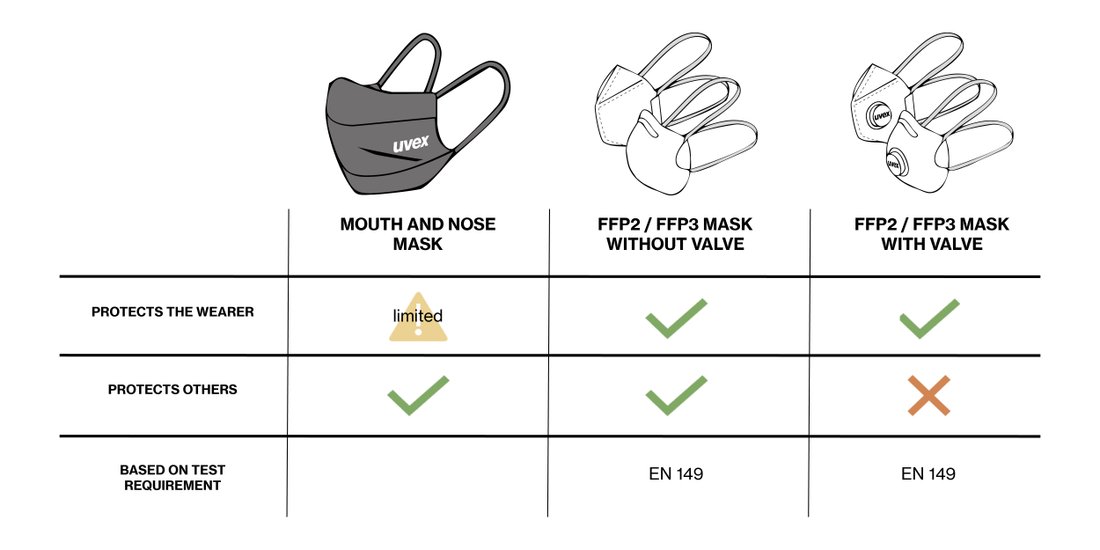
Mouth and nose masks are often referred to as surgical masks. They are designed to prevent droplets and bodily fluids excreted by the wearer from being transmitted into the environment. However, these masks do not provide sufficient protection for the wearer.
Unlike respiratory protection products designed in line with EN149, these masks are not considered personal protective equipment. uvex masks are primarily designed to protect the wearer, which is why factors such as achieving a close fit are incredibly important. uvex respirators are capable of filtering out the smallest particles and droplets from the ambient air to provide reliable protection for the wearer.
uvex focuses on the manufacture of personal protective equipment. For this reason, our range only includes respirators that satisfy European Standard EN149; we do not sell surgical masks.
The German Institute for Occupational Safety and Health has compiled a detailed comparison of the various types of mask available.
When fitting a respirator, achieving a close fit is essential to the wearer’s safety. Instructions for correctly fitting the masks can be found in the instructions for use and on the packaging.
You can also consult our instruction videos:
uvex flat-fold masks

uvex cup-style masks

According to the Robert Koch Institute, the most important and effective ways to protect yourself are: “Self-isolation if you are ill, practising good hand hygiene, complying with rules relating to coughs and sneezes and practising social distancing (staying at least 1.5 metres away from others)”. If you are treating a patient, the authorities recommend other measures, including wearing a close-fitting, multi-layer mouth and nose mask.
The minimum recommended protection level for respiratory protection is FFP2 (based on the European standard) or N95 (based on the American standard). Masks in protection categories FFP3 or N99 provide a higher level of protection.
Further information can be obtained directly from the Robert Koch Institute or the World Health Organization.
An examination of the antiviral properties in accordance with ISO 18184:2019-06 showed that the uvex phynomic silv-air glove far exceeds the requirements and the viral load is minimised within minutes. The study involving the virus CCov – VR 809 (from the SARS-CoV-2 family) found that a canine virus type with a lipid envelope is broken down particularly quickly by the HEIQ VIROBLOCK by CHT technology. Covid-19 is caused by a virus from the same family. HEIQ VIROBLOCK by CHT is one of the first textile technologies in the world that has been proven in a laboratory to be effective against SARS-CoV-2. Tests by the Peter Doherty Institute for Infection and Immunity in Melbourne, Australia (Doherty Institute) showed that the treated fabric achieved a 99.9 percent¹ reduction of the virus. This effectiveness of the gloves was proven again in independent tests carried out in accordance with ISO 18184:2019-06 and ISO 20743:2016.
Our uvex phynomic silv-air and uvex phynomic silv-air grip gloves are the first uvex products to combine our tried-and-tested protective components with the revolutionary textile technology HEIQ VIROBLOCK by CHT. The innovative composition of our gloves minimises the risk of contact infection from objects within minutes by inhibiting the spread of bacteria and viruses on the gloves and inactivating 99.9%¹ of viral particles on the glove surface.
Before you put on the uvex phynomic silv-air, you should wash and dry your hands, following the five steps set out by the German Federal Centre for Health Education. Do not use any sanitiser or skin care products after washing your hands, as these can damage the gloves. We also recommend removing any jewellery and trimming your fingernails as these can damage the safety gloves. Check the gloves for damage before putting them on.
The uvex phynomic silv-air gloves can be removed in the normal way. Thanks to the disinfecting effect, which takes just a few minutes, the external surfaces of the gloves are not contaminated and so do not need to be avoided.
If overalls are certified in accordance with EN 14126, they meet the performance requirements against infectious agents and may be marked with the "B". Here, it is important to note that the defined test procedures focus on the medium that contains the micro-organisms, such as fluids, aerosols or solid dust particles and not on specific viruses or bacteria. Overalls with taped seams provide a higher level of protection as the micro-organisms are small enough to penetrate through the tiny needle holes along the seam.
To ensure that the disposable clothing is able to deliver its full protective effect, it is crucial to put it on and take it off correctly. Certain steps need to be carried out in a set order. You may need to get someone to help you. In the following – and in our blog post – we explain what to look out for:
Putting the PPE on:
Before putting the protective suit on, it is essential to check it for any defects such as open seams, damaged zips or other faults that could impair the protective effect of the garment.
- Remove any jewellery and watches
- Step into the overalls and zip up to the hips
- Put on your boots
- Put on your respirator and ensure that the seal is tight
- Put on your safety glasses
- Pull the hood of the overalls over your head
- Zip up the garment all the way to the top
- Press the flap into place to cover your chin and the zip fastener
- Put on your safety gloves and pull up over your sleeves
- Check that the overalls will not tear even if you stretch or squat down
Taking the PPE off:
- Disinfect your safety gloves
- Pull the hood down
- Peel the overalls off over the shoulders and down to hip height, ensuring that the inside of the overalls is facing the outside. At the same time, pull your arms out of the sleeves (ask a second person wearing safety gloves and respirator to help if required)
- As you peel off the lower half of the overalls, the boots are pulled off
- Peel off the safety gloves by pulling them inside out
- Take your glasses off from back to front
- Remove your respirator in the same way
- Disinfect your hands and then thoroughly wash your hands, face and any other potentially contaminated areas of skin using water and a disinfecting wash
A3 posters are also available for printing - Please note that the selection of additional PPE shown is an example and must be adapted to your requirements:
Type 5/6
Type 3
You can find out how you can verify the authenticity of a uvex product and identify whether it is a correctly approved respirator, and what you can do if you are not sure whether your product is a fake in our blog article or here for download.
See our FAQs for the answers to more frequently asked questions.
¹ Testing and confirmation of antiviral efficacy in an independent and accredited external laboratory in accordance with ISO 18184


